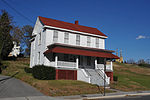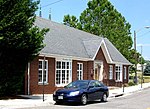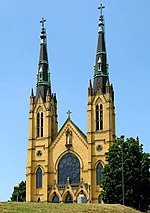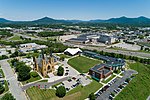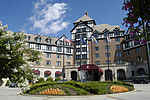Gilmer, Roanoke, Virginia
Neighborhoods in Roanoke, VirginiaVirginia stubs
Gilmer is a neighborhood in central Roanoke, Virginia, USA, abutting the Norfolk Southern rail yard that initially developed in the 1920s as an early Roanoke suburb. It borders the neighborhoods of Harrison on the north, Gainsboro to the east and Loudon-Melrose to the west. Both the West End and Hurt Park are to the south and can be accessed via the 10th Street Bridge across the railroad gulch. Founded in 1980, the Northwest Neighborhood Environmental Organization is the community development corporation active within the Gilmer neighborhood.
Excerpt from the Wikipedia article Gilmer, Roanoke, Virginia (License: CC BY-SA 3.0, Authors).Gilmer, Roanoke, Virginia
Gilmer Avenue Northwest, Roanoke Rugby
Geographical coordinates (GPS) Address Nearby Places Show on map
Geographical coordinates (GPS)
| Latitude | Longitude |
|---|---|
| N 37.276313888889 ° | E -79.942038888889 ° |
Address
Gilmer Avenue Northwest
Gilmer Avenue Northwest
24016 Roanoke, Rugby
Virginia, United States
Open on Google Maps
